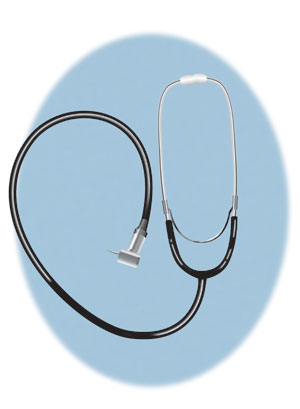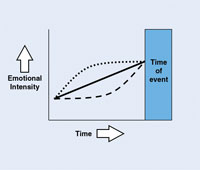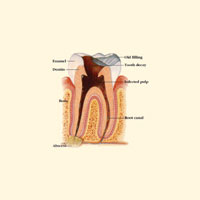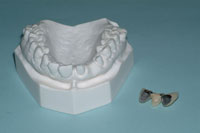The winds of change are blowing across the face of medicine and dentistry. They bring with them new opportunities for practice growth and patient care. With these changes many dentists are discovering how to build referral relationships with physicians. Emerging science, maturing demographic trends, and a convergence of forces in the marketplace are unique and powerful in their application and timing.
As dentists learn how to approach physicians and build referral networks, they will differentiate themselves, elevate their standard of care, and grow their practices through increased comprehensive services to physician-referred patients. To accomplish this, dentists should become knowledgeable about the new science and learn how to qualify themselves for inclusion in professional referral networks.
What is it that creates medicine and dentistry’s newfound interest in each other? In short, periodontal disease, sleep apnea, and headaches each represent medical conditions where the new science is demanding that we collectively rethink if not rewrite the books on how we treat patients. The strength of the new science is the driving force that compels physicians to refer patients gladly and justifies dentists’ efforts to position themselves in their community to receive these referrals.
 |
|
Illustration by Cheryl Gloss |
THE ORAL-SYSTEMIC CONNECTION
The effects of periodontal disease have long been understood with regard to the local deterioration of the periodontium. An abundance of new science is now instructing us, however, that gingival inflammation from oral bacteria allows bacteria and their endotoxic by-products to enter the general circulation. These inflammatory cytokines up-regulate the liver to create C-reactive protein (CRP).
It is now agreed that this systemic inflammation has a negative effect on distant organs and tissues. Most notable is the impact on the cardiovascular system, diabetes stability, and pregnancy complications, among other problems. A good literature review finds that “systemic inflammation” is a common thread that connects a wide number of seemingly disparate medical conditions. This serves to underline the importance of our involvement in dentistry’s role in what has been dubbed The Oral-Systemic Connection.
Ironically, for years many have claimed oral microbiology was at the heart of the matter. With all double meanings intended, we now discover it is. Periodontal disease is a medical problem. It is why informed dentists are now measuring CRP, HbA1c levels, and blood lipids, and are working closely with physicians.
Since periodontal disease is now considered an independent risk factor for heart disease, and CRP is a stronger predictor of future coronary events than is cholesterol levels, conscientious dentists must get involved. They must refer periodontal patients to physicians for medical management of its comorbidities, and encourage and accept referrals from physicians who cannot diagnose or treat chronic oral infections.
As physicians become aware of this science and the potential legal scrutiny from liability risk-managers and malpractice attorneys that accompanies it, they will no longer overlook the teeth and gums on their way to the throat. Indeed, the world of medicine is changing for physicians as well as dentists.
SLEEP APNEA—DENTAL SLEEP MEDICINE
With the discovery that a positive pressure device worn over the nose provided a pneumatic splint to reinforce and hold open collapsing airways during sleep, physicians finally found a viable treatment for obstructive sleep apnea (OSA). However, due to the discomforting effects of a continuous positive airway pressure (CPAP) device, many people are intolerant of the therapy and cannot or will not cooperate with nightly treatment. Thus they remain at-risk for the significant co-morbidities of this condition, which notably include cardiovascular disease, hypertension, excessive sleepiness, accidents, lowered cognition, depression, etc.
Sleep medicine has now emerged as a viable subspecialty in medicine. Sleep clinics and labs are multiplying around the world. New practice parameters from within sleep medicine declare that oral appliances that hold the mandible forward and open the airway are indicated for mild to moderate obstructive sleep apnea. They are often the only hope that CPAP-intolerant patients have.
Sleep physicians are looking for qualified dentists trained in the discipline of dental sleep medicine. Physicians can’t manage occlusion, appliances, and TMJ problems. While the legal standard of care does not allow dentists to diagnose sleep apnea or provide snoring appliances without proper testing for hidden sleep disorders, we can screen and refer patients for sleep evaluation, provide oral appliances where prescribed and preferred, and generally build a strong reciprocal referral relationship with physicians and sleep labs so that proper diagnosis happens and appliance titration can occur. Remember, oral appliances require healthy, restored, and stable teeth or implants in order to work.
HEADACHES—TMJ
An exceedingly large number of our population suffers from headaches. Patients generally turn first to medical doctors for relief. Physicians, ENTs, and neurologists do their best to treat sinus problems and vascular headaches, and attempt to rule out significant neurologic and organic problems.
However, a large percentage of the remaining head-ache pathology can be attributed to occlusion, posture, and TMJ/TMD problems. These problems lend themselves to dental therapies generally requiring a combination of orthodontics, splint therapy, and balancing the forces of occlusion and muscle tension. Physicians are beginning to understand that many of their headache patients need to be treated and managed by an informed dentist. As dentists work locally at the grass-roots level with physicians, they can educate and inform these healthcare providers on how to help manage headache patients successfully to everyone’s satisfaction and the patient’s delight.
MARKETPLACE FORCES DRIVING DENTAL MEDICINE
Dentists and physicians aren’t the only ones interested in this new paradigm. Corporate and media interests, medical insurance companies, attorneys and liability risk managers, and the natural interest of an aging population are all moving forward to drive demand for services and products.
To be sure, none of this is lost on the corporations who sell toothpaste and antimi-crobial products, or the major media outlets that have tapped into the new science and aging demographics to educate the public about the life-threatening dangers of untreated gum disease and sleep apnea. It is a “popular science” that is selling advertising, magazines, and news shows. Billions in supportive product sales are at stake.
Medical insurers are now paying for periodontal treatments during pregnancy as well as for those people with diagnosed cardiovascular disease and diabetes. This trend is sure to continue as they rightly conclude that their treatment costs decrease in populations of periodontally healthy subscribers. Risk managers and malpractice attorneys represent opposite ends of the coming medical/legal scrutiny that will have physicians meticulously aware of the need to refer medical patients to dentists for management of gum disease.
Over the past decade, new technology created the cosmetic dentistry phenomenon. Now we find modern science driving systemic inflammation to the forefront. It is now labeled “the silent killer.” Suddenly, in addition to looking good, baby boomers have a serious if not newfound interest in wellness and reducing risk factors. After all, they are 10 years closer to an “event” that can end their lives! The science of systemic inflammation now empowers dentists with new treatment offerings, creates new marketing strategies, and gives dentistry a place in the new playing field of dental medicine. With 3 out of 4 deaths being caused by cardiovascular disease and cancer, and numerous other medical problems attributable to related causes, dentists now play a pivotal role in saving lives and working with physicians to treat co-morbidities. This can be done by reducing systemic inflammation through effective treatment of periodontal disease and sleep apnea.
To make the point: gum disease is a chronic infection now linked to death. Sleep apnea kills, and headaches are life-altering. Indeed, dentistry has now entered the world of systemic medicine.
WHAT DENTISTS CAN DO
Most physicians do not have a dentist in their network to whom they refer patients or consult with. This is the opportunity that exists for dentists who want to be among the first in their community to get physician referrals. The implications of this positioning strategy from a marketing perspective are self-evident. However, it doesn’t happen by magic.
Dentists who successfully differentiate themselves and are timely with this in their community will make every effort to learn the underlying science and how to present themselves professionally. In this way both they and their message will demand attention, command respect, and build confidence. For dentists to present themselves professionally they must learn how to approach physicians. Announcing your presence with a business card and some common vocabulary isn’t enough to merit a welcome invitation to be part of a referral network. Professional marketing materials, newsletters, referral strategies, PowerPoint presentations, brochures, a patient report system, and referral aids are all part of a well-choreographed marketing effort that builds professional confidence and differentiates you from all others in the community vying for referrals.
A good strategy is to begin internally with existing patients by communicating with each patient’s physician about his or her oral health status, CRP and HbA1c blood results, sleep survey scores, and headache or face pain status. Dentists can offer a Physicians Resource Manual (part of the Physicians Referral and Education Program Marketing System found at MDReferrals.net) to the physician, or conduct a short inservice training for physicians with handouts, slide presentations or flip charts, and referral cards.
These are excellent opportunities to train physicians and their staff how to screen for periodontal disease in the medical office, how oral appliances can help sleep apnea, and how TMD therapy can resolve many headaches. Frequent informative newsletters sent to or “dripping” on the medical office remind the physician of the dentist’s expertise and knowledge.
While much of this is very laborious and time consuming, many of these strategies can be outsourced and are turnkey and “plug-n-play.” Training resources, marketing strategies, and communication materials can be secured, customized, and used quickly with minimal time requirements from the dental office. Practice management companies now offer coaching and expertise on building a productive periodontal therapy program offering modern, high-end, antimicrobial periodontal care, and how to manage the marketing behind the physician referrals program.
SAVING LIVES—ONE SMILE AT A TIME
This new era of dental medicine creates a new standard of care for all dentists to meet. The excellent care rendered in tens of thousands of dental offices around the world by knowledgeable dentists working with physicians will save millions of lives. The emerging science demands a new posture as we communicate to our patients and their physicians that gum inflammation kills. It demands that we not allow gingival bleeding to continue unchecked, that we control periodontal problems in pregnant women and people with heart disease, and that we work with physicians to manage the co-morbidities associated with systemic inflammation and sleep apnea.
Dentists who develop good referral relationships with physicians in their community will differentiate themselves and grow their practices. Each referral brings a mouth full of problems to fix. And while we are putting smiles back on these patients’ faces, we are helping them to enjoy more productive and healthy years with their children and grandchildren.
Building professional referral relationships is an idea whose time has come. The science demands it! Sharp dentists in every community will lead in this effort—and by so doing they will differentiate themselves and make dentistry (and themselves) look good in the process.
Dr. Ostler practices general dentistry in Richland, Wash. He is the author of The Physicians Marketing Handbook, and has created the Physicians Referral and Education Program (PREP) Marketing System. For additional information, or to read a special report on How to Market to, and Get Referrals From Physicians, visit MDReferrals.net. Dr. Ostler can be reached at (509) 946-6566 or
LeeOstler@MDReferrals.net.











